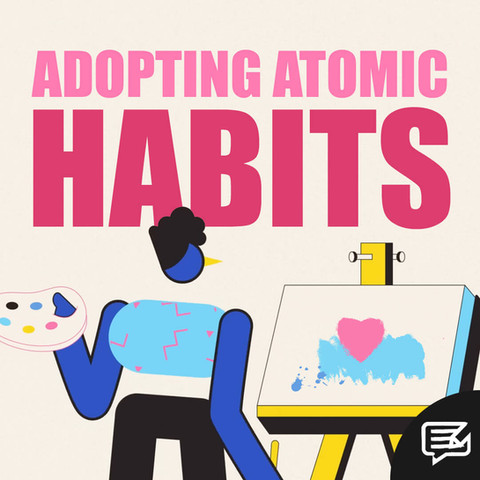
17.07.21
THE SCIENCE OF SAD SONGS
If you’ve ever felt a lump in your throat listening to a piece of music, you’re far from alone. It’s a strange phenomenon – that the soft strumming of a guitar or sad sax solo can make you well up, especially without any prior connection to the tune.
Sure, you’d expect a melancholy hymn from a funeral you attended to evoke such emotion, but what of a new track you’ve just heard on the radio? Or that Spotify has thrown up on a playlist?



If you’ve seen The Holiday – a festive feel-good movie from 2006 that’s so cheesy you’ll taste Roquefort for weeks after – you’ll be familiar with a scene between Jack Black and Kate Winslet. In it, Black’s character serenades Winslet’s Iris using “only the good notes”. For a non-musician, such as myself, it made me wonder what exactly constitutes a “bad note”?
Conversely, listening to “sad music” can actually make us feel better, as this 2016 article by David Nield for Science Alert attests:
“A new study sheds light on what's going on inside our brains when we match our music to our feels, and it looks like sad music can be enjoyable - rather than simply depressing - because it triggers positive memories that can help to lift our mood.
“The study – conducted by researchers at Durham University in the UK and the University of Jyväskylä in Finland – analysed three large-scale surveys, covering 2,436 people in total, and found that there was a wide spectrum of responses to wistful songs.
“But three key responses stood out in particular: pleasure, comfort, and pain. Often these reactions were triggered by happy or sad memories recalled by the music, according to the researchers.”
Two possible explanations for why we enjoy listening to sad music pertain to social psychology and cognitive neuroscience. From a social psychology perspective, there’s a process known as “downward social comparison” - a defensive tendency used as a means of self-evaluation. Essentially it means to look to another individual or group that you consider to be worse off than yourself to feel better about your own situation.
Another hypothesis is that we listen to music that mirrors the tone of our current life circumstances – or, as Nield so eloquently puts it: “the songs act as a sort of tuning fork for our own situations, and they resonate with us.” This theory centres on neuroscience and the chemical processes occurring inside our minds:
“Some scientists think melancholy music is linked to the hormone prolactin, a chemical which helps to curb grief. The body is essentially preparing itself to adapt to a traumatic event, and when that event doesn't happen, the body is left with a pleasurable mix of opiates with nowhere else to go.”
A third hypothesis referenced by Nield suggests our minds handle sadness differently if we experience it through art rather than first-hand. This makes sense when you consider our reactions to paintings, photographs, poignant songs or a good old-fashioned tearjerker movie.
A 2017 article from NBC News questions if Adele is making you cry, or if you’re using Adele to bring on the waterworks. Apparently, it’s a little bit of both:
“When you hear a song and get the chills, your parasympathetic nervous system, or “rest and digest” system, is activated, as well as the reward-related brain regions of your brain. Dopamine, a feel-good chemical, is also released so though they can feel a little freaky, the chills you’re feeling (or goosebumps you’re getting) are usually good chills.
“While songs that inspire the chills could sound happy or sad, and can arouse you or calm you down, songs that make you cry are usually more sad and calmer, with slower tempos and more minor and diminished chords, to evoke a more sedative, or reflective, mood.”
Findings published in Frontiers in Human Neuroscience found that people tend to choose music to feel seven different things: Entertainment, Revival, Strong Sensation, Mental Work, Solace, Diversion and Discharge. The latter three are ways people tend to use music to deal with, or “regulate”, negative feelings:
Solace
When people who are sad listen to music to feel understood and less alone.
Diversion
When people listen to music to change, or distract themselves, from their mood.
Discharge
When people listen to music that matches their mood, like when you’re frustrated in traffic and belt out a heavy metal or punk song to channel your frustration, or facilitate some form of emotional release.
But what if you haven’t chosen to listen to music, but are subjected to it anyway? Perhaps when you’re on hold to the utility company, or doing your weekly shop at the supermarket. What explanations exist for “sad notes”, regardless of our mood or state of mind? Are there universal musical characteristics guaranteed to provoke visceral reactions?
Back in 2012, John Sloboda – a professor of music psychology at London’s Guildhall School of Music and Drama – told NPR that unexpected chord progressions have a lot to answer for:
"Our brains are wired to pick up the music that we expect, and generally music is consonant rather than dissonant, so we expect a nice chord. So when that chord is not quite what we expect, it gives you a little bit of an emotional frisson, because it's strange and unexpected."
In 2017, music therapist Kimberly Sena Moore added her two pennies’ worth with a fascinating piece for Psychology Today. She pointed to three key reasons as to what makes music sad:
Modes:
Modes involve the arrangement and ordering of musical notes in a particular key. It’s this arrangement of notes that create the chords we hear, which lend themselves to our perception of a piece’s tonality. (Tonality describes the "color" of a musical piece and is based on which chords and harmonies are more important than others in a given musical work.) Common modes include the major mode and minor mode, and these two modes, in particular, are used to portray happy (major mode) and sad (minor mode) music. Research lends support, as musical modes are potent cues for musical emotions, even in school-aged children.
Tempo:
Tempo refers to the speed, or pace, of a musical piece. As with modes, tempo is also used as a way to express emotions. In fact, it’s generally considered to be one of the more important musical characteristics to do so, with fast music portraying happiness and slow music portraying sadness. Now, it should be noted that fast and slow tempos can be used to indicate other emotions (e.g., fast tempo for anger and slow tempo for calmness). In these instances, other musical characteristics interact with tempo to portray the intended emotion. For example, fast music in a major mode will more likely sound happy, whereas fast music in a minor mode will more likely sound angry.
And finally:
Interactions Between Musical Characteristics:
The role of other musical characteristics in expressing emotions - melody, timbre, dynamics, harmony, etc. - has also been explored by researchers. And though research indicates each contributes in some way towards making sad music sad and happy music happy, in practice emotional expression is really more about the interactions between how different musical characteristics are structured. An example of this has been shared already - fast music in a major mode is often considered happy, while fast music in a minor mode is often considered angry. There are other examples as well, such as loudness (dynamics) and pitch height. High pitched music played quietly will likely sound fearful, while high-pitched music played loudly will likely sound happy (or angry, depending on other factors like timbre, tempo, mode…).
Sena Moore also makes reference to Malcolm Gladwell’s podcast episode “The King of Tears” from his “Revisionist History” series:
“As I understand it, Gladwell’s main point is that musically induced tears occur when ‘melancholy collides with specificity.’ In other words, when the characteristics of the music itself (in his argument, lyrics) combine with details, memories, and images related to one’s life or other emotional triggers, that’s what contributes to the experience of sad music. And though I don’t disagree with this sentiment, the phenomenon itself is much more complex than that, or even (quite frankly) than what’s been shared in this post. The perception of sad music includes other characteristics beyond lyrics, particularly tempo and mode, as well as the interactions between musical elements.
“A final point—I’ve focused mostly on the music itself in this post. However, context matters, too. The same song can be sung by different performers and achieve different emotional results. Perceived musical emotions also depend on the listener. One listener may be touched by a particular song (and, yes, it may be due in part to the lyrics contributing to the melancholy + details formula proposed by Gladwell), whereas another may not be, even if they are hearing the same performance.”
So, there you have it! Welling up at Gabriel’s Oboe from The Mission isn’t so much a spontaneous, unprecedented reaction but the result of many, many complex factors from emotional state, mood and context, to mode, tempo and interactions between each element.
Fancy creating your own sad song? Check out this article about minor scales from Landr before letting loose on Chrome Music Lab. Ok, ok… it’s aimed at school children, but it’s still a fun way to while away those idle minutes between Zoom calls…

























































